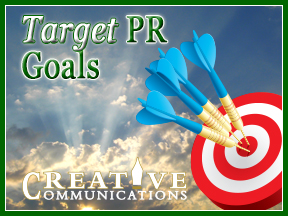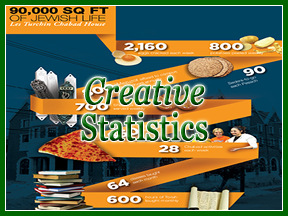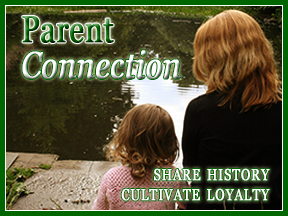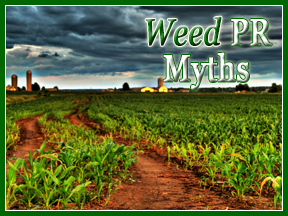 Weed PR Myths…
Weed PR Myths…
Possibly, your high schoolers decided to host a Tu b’Shevat seder for the seniors from the local nursing home and/or the public school students down the block.
Perhaps they are raising awareness about, and funds for, The Jewish National Fund’s National Water Task Force.
My point? Tu b’Shevat is celebrated is a variety of ways. Analyze your school’s unique Tu b’Shevat from a public relations perspective. Then strategically sow your PR seeds and weed out any PR myths that may be threatening your harvest.
Your Tu b’Shevat PR should be about more than getting a picture in the paper. It should help attain your short and long term goals.
Dispel Myths! Myths persist and sadly the bad ones blossom. Use your Tu b’Shevat PR to weed them out!
Myth One: The school’s Judaic Studies curriculum is basic, boring, and not rigorous.
Promote your Tu b’Shevat Seder not only as a feel-good” photo-op but also as a concrete celebration of Jewish history and philosophy.
Share how students learned about the development of rituals. An Introduction to the Tu b’Shevat Seder by David Jay Derovan, provides excellent background, tracing the b’Shevat Seder’s historical development to the sixteenth century kabbalists of Tzfat.
Myth Two: Students put money in a tzedaka box every Friday and participate in bike-a-thons, but they don’t connect to them or Eretz Yisrael in a meaningful manner.
If such misperceptions keep you awake at night, your PR efforts should focus on how you teach a connection to the earth. Focus on your innovative, cross-curricular methods of teaching environmental responsibility.
Myth Three: The school provides and excellent Judaic and Secular studies education. Sadly, they don’t seem to be very Zionistic.
Your release should demonstrate that your Tu b’Shevat lessons foster a direct connection to Israel by addressing current environmental issues and challenges in Israel.
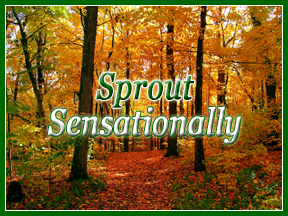 Sprout Sensationally…
Sprout Sensationally…
It’s possible that your goal is simply to appear in the newspaper monthly. Even so, think about your overall calendar.
A simple PR calendar should reflect your school’s varied strengths. Even if you have a loyal base AND a pre-school waiting list, you must present a well-rounded image.
Clearly, a community day school promotes itself differently than a mesivta. Yet, the strategic rules are the same. If your goal is to be in print once a month during the school year, you still need to plan twelve releases and be sure that collectively they reflect ALL your priorities.
So while a mesivta might learn more heavily toward articles that reflect its Limudei Kodesh curriculum and the kesher maintained with alumni while students are studying in Israeli yeshivas and after they return to pursue college education. To reflect varying strengths, a mesivta should be sure to promote its AP scholar and state-of-the-art Science program. Similarly, the Community Day School might promote the way it stresses that stellar analytical skills are not only for acing tests but also for being productive and inclusive members of both klal yisrael and secular society.
 More Tu b’Shevat Resources
More Tu b’Shevat Resources
Canfei Nesharim
Canfei Nesharim’s website includes many articles and Divrei Torah exploring the connections between Tu b’Shevat and the environment. It also features sample lesson plans to educate about the environment from a Torah perspective.
Lookstein Center
The Lookstein Center provides links to a variety of lesson plans, articles and printable Tu b’Shevat Sederim.
Hazon
Hazon is a dynamic organization that works to create a healthier and more sustainable Jewish community for all. Learn about its innovative educational curricula and resources and download the Tu b’Shevat Haggadah.
Coalition on the Environment and Jewish Life (COEJL)
COEJL seeks to expand the contemporary understanding of such Jewish values as Tikkun Olam, Tzedek, and G’Milut Chasadim to environmental action and advocacy. Its Tu b’Shevat page features creative resources.
Jewish National Fund
The Jewish National Fund (JNF) is not only about tree certificates and little blue Tzedaka boxes (though they certainly are a source for both)! Access the JNF’s Tu b’Shevat Across America page which provides different Tu b’Shevat Haggadot, activities, lesson plans, sermons, and a host of other resources. Tu b’Shevat in the Schools program will provide you with free educational newsletters and posters.
Teva Center
The Teva Center is a non-denominational Jewish Environmental Education Institute. It runs single-day programs as well as residential programs (from two- to four-days in duration) for fourth- through eighth-graders. These intensive programs are designed to sensitize participants to nature’s rhythms and help them develop a more meaningful relationship with both nature and their own Jewish practices. (These programs take place at several sites in the Northeast.)
Click here to read Plant, Weed, and Sprout – part I
Smiling faces, interactive cross-curriculum learning, and directly linking Torah with “Green” are all positive Tu b’Shevat pitches. Think about the crop you want to reap before planting your PR seeds! Sow strategically and you will not only gain clips; you’ll also achieve your goals! Should you have any questions about writing more effective press releases or about any of my day school services, please send me an email or call me at 516.569.8070.
Kol tuv,

Candace Plotsker-Herman
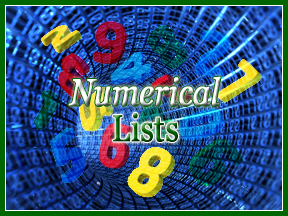
![]() We made more frequent but less costly and more effective fundraising appeals through using social media.
We made more frequent but less costly and more effective fundraising appeals through using social media.![]() We applied for and received funds to upgrade our inefficient HVAC system.
We applied for and received funds to upgrade our inefficient HVAC system.![]() We partnered with another local school and a local senior center to qualify for significant volume discounts on office supplies.
We partnered with another local school and a local senior center to qualify for significant volume discounts on office supplies.![]() 4 new innovations in our early childhood reading program.
4 new innovations in our early childhood reading program.![]() 4 new teachers coming aboard in September.
4 new teachers coming aboard in September.![]() 4 national Merit Scholarship Winners.
4 national Merit Scholarship Winners.![]() 4 generations participate in our Yom HaShoah program.
4 generations participate in our Yom HaShoah program.![]() Kindergarten students plant vegetables while learning about harvesting and the concept of omer.
Kindergarten students plant vegetables while learning about harvesting and the concept of omer.![]() Middles schoolers count omer over the phone with their nursing-home-resident “sefirah buddies.”
Middles schoolers count omer over the phone with their nursing-home-resident “sefirah buddies.”![]() Eighth graders visit the bar kochba caves during their Israel trip
Eighth graders visit the bar kochba caves during their Israel trip![]() Sophomores explore one of the seven lower kabalistic sefirot each week.
Sophomores explore one of the seven lower kabalistic sefirot each week.![]() High school seniors learn that “Torah is acquired through 48 ways (Avot, 6:5).” They then prepare for matan Torah by logging into Rabbi Noah Weinberg’s series, the 48 Ways every morning.
High school seniors learn that “Torah is acquired through 48 ways (Avot, 6:5).” They then prepare for matan Torah by logging into Rabbi Noah Weinberg’s series, the 48 Ways every morning.![]() 800 hours of Hebrew spoken in every middle school classroom
800 hours of Hebrew spoken in every middle school classroom![]() 600 hours of STEM instruction in every fourth grade class
600 hours of STEM instruction in every fourth grade class![]() 500 healthy snacks served every day
500 healthy snacks served every day![]() 24 stimulating lectures and workshops for parents each year
24 stimulating lectures and workshops for parents each year

 Tu b’Shevat catalyzes blooming PR!
Tu b’Shevat catalyzes blooming PR! Plant PR Seeds…
Plant PR Seeds… Weed PR Myths…
Weed PR Myths… Sprout Sensationally…
Sprout Sensationally… More Tu b’Shevat Resources
More Tu b’Shevat Resources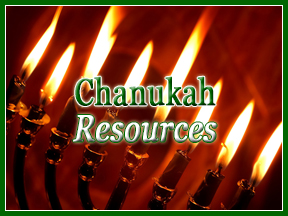 As Chanukah a
As Chanukah a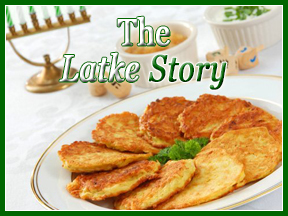 What does a latke have to do with a story?
What does a latke have to do with a story? What’s inside your Sufganiyot?
What’s inside your Sufganiyot?

